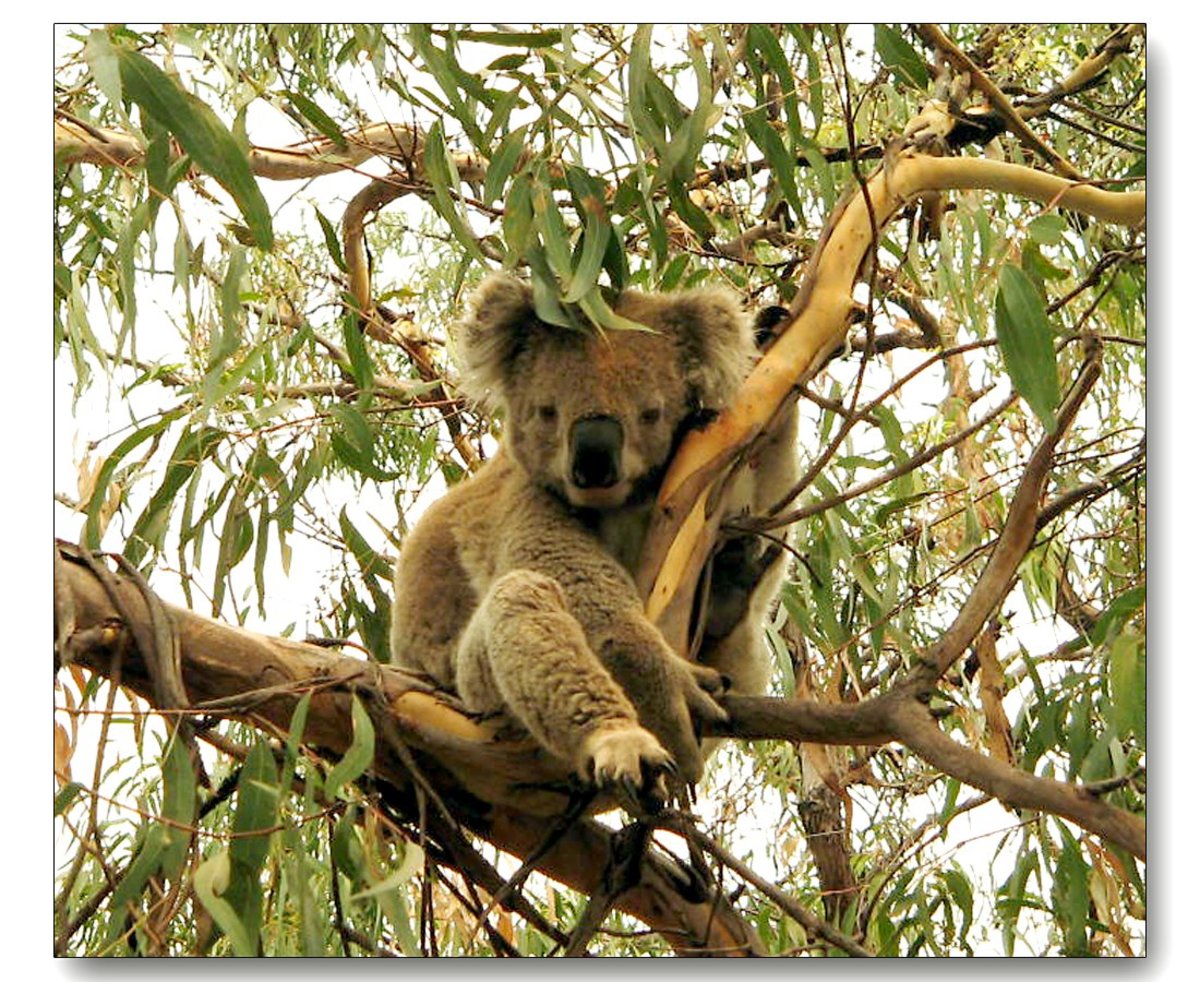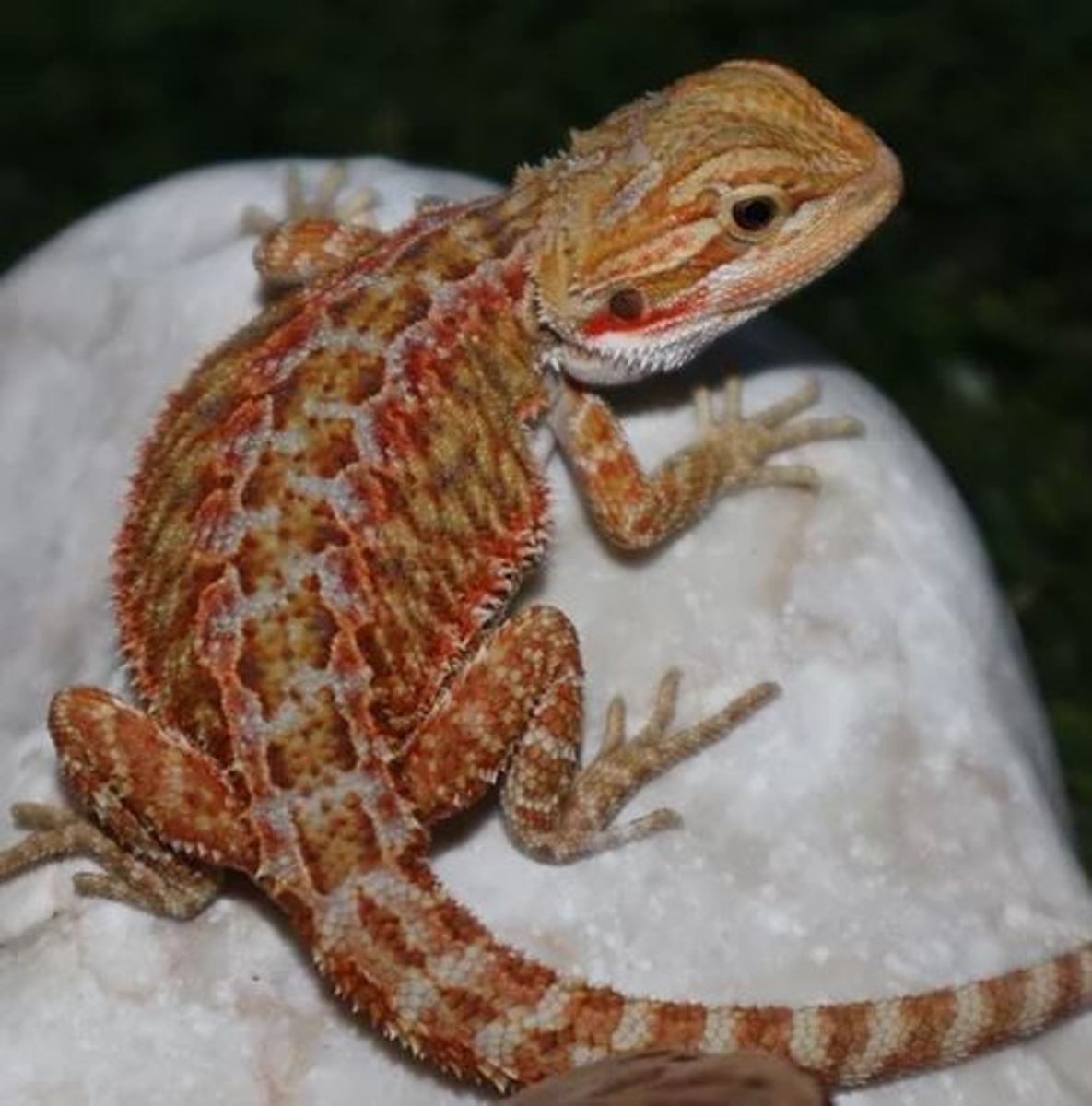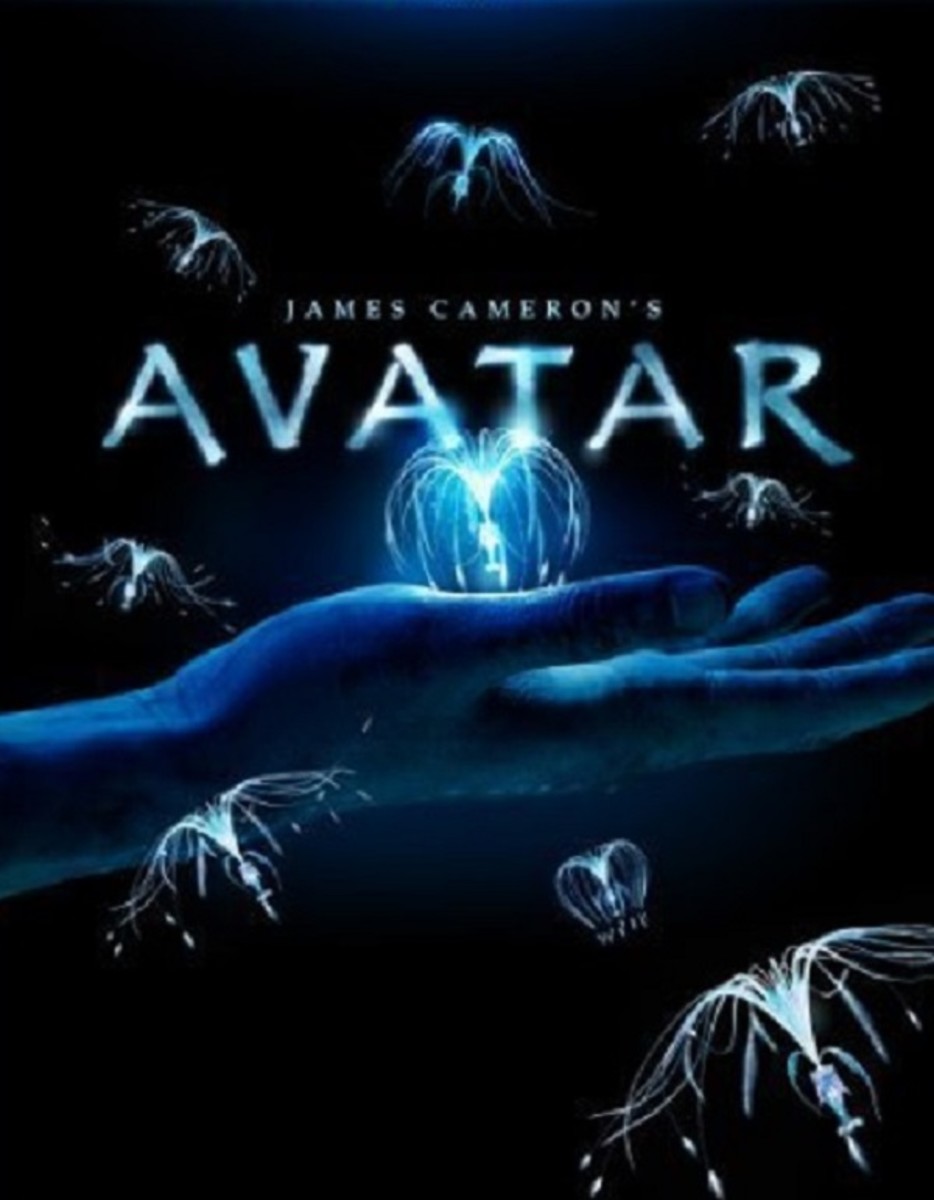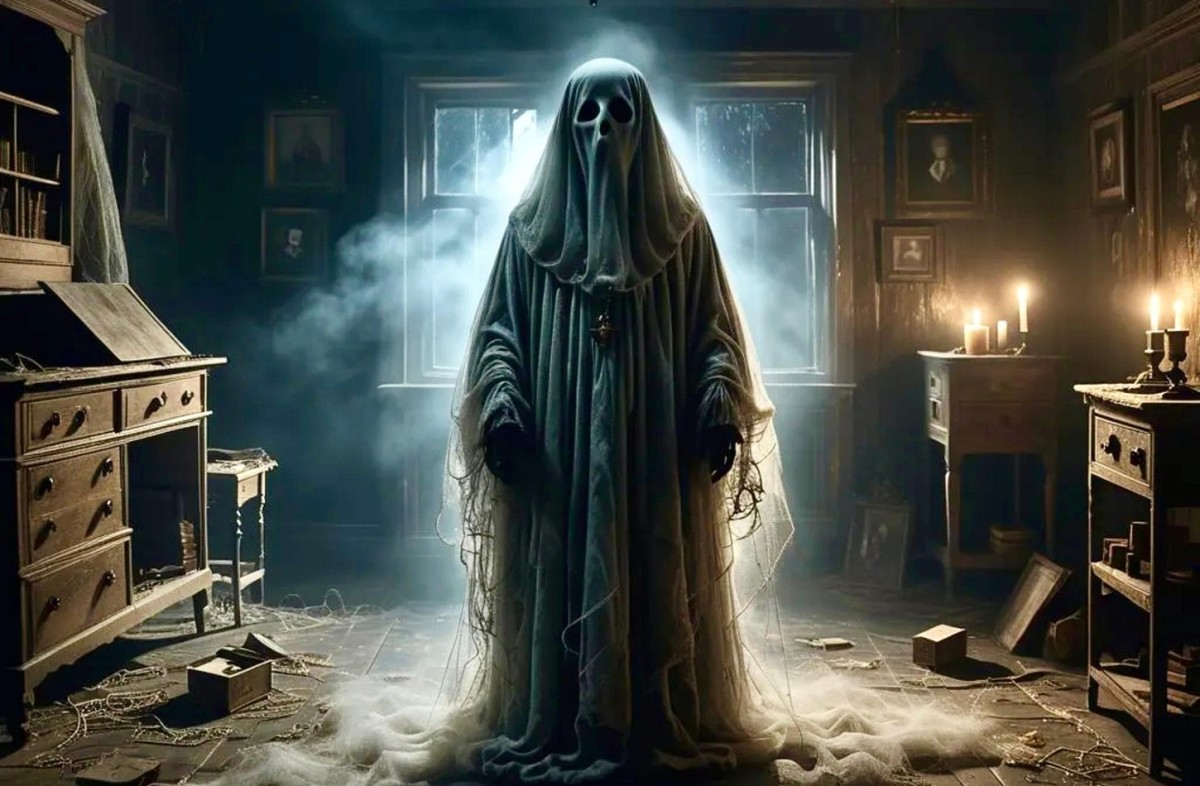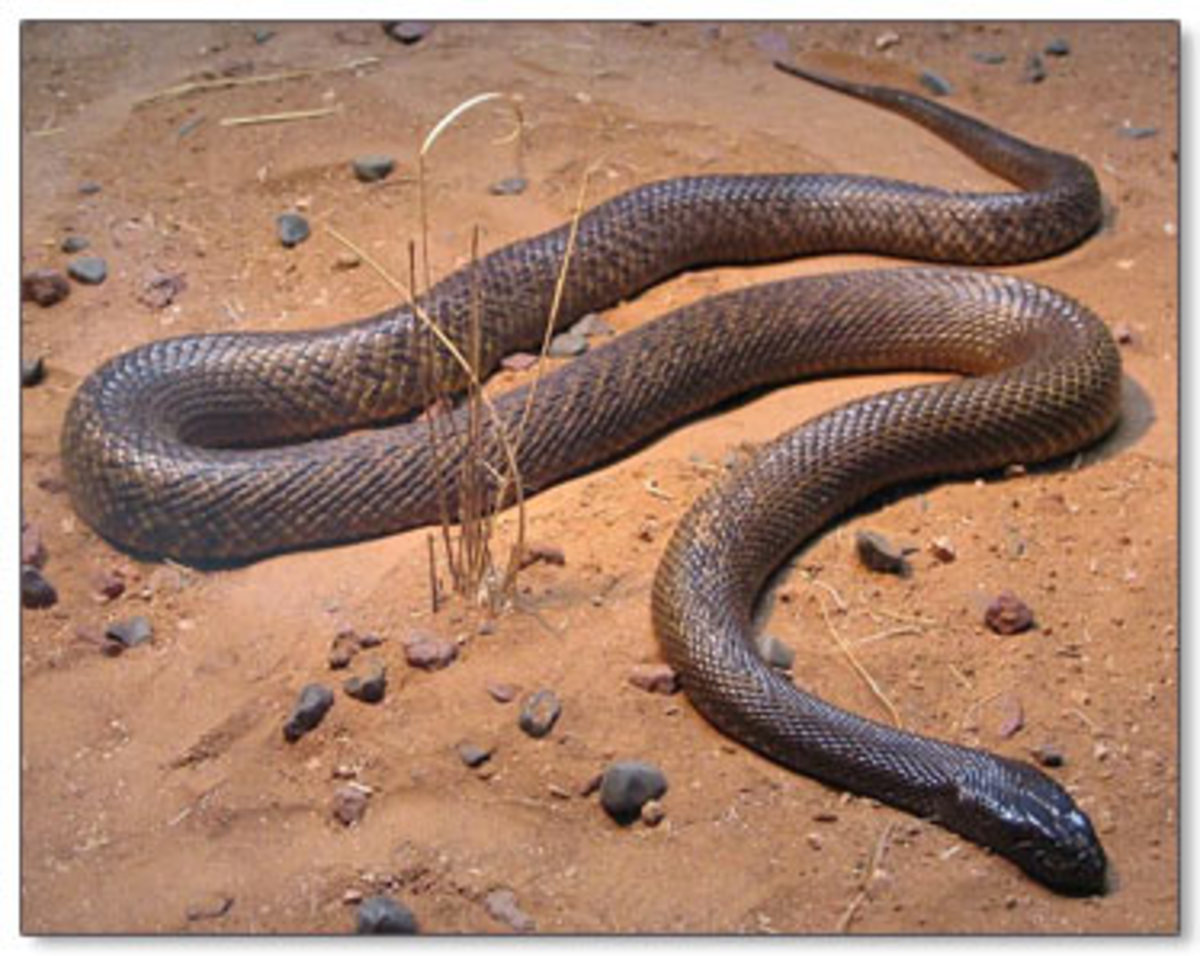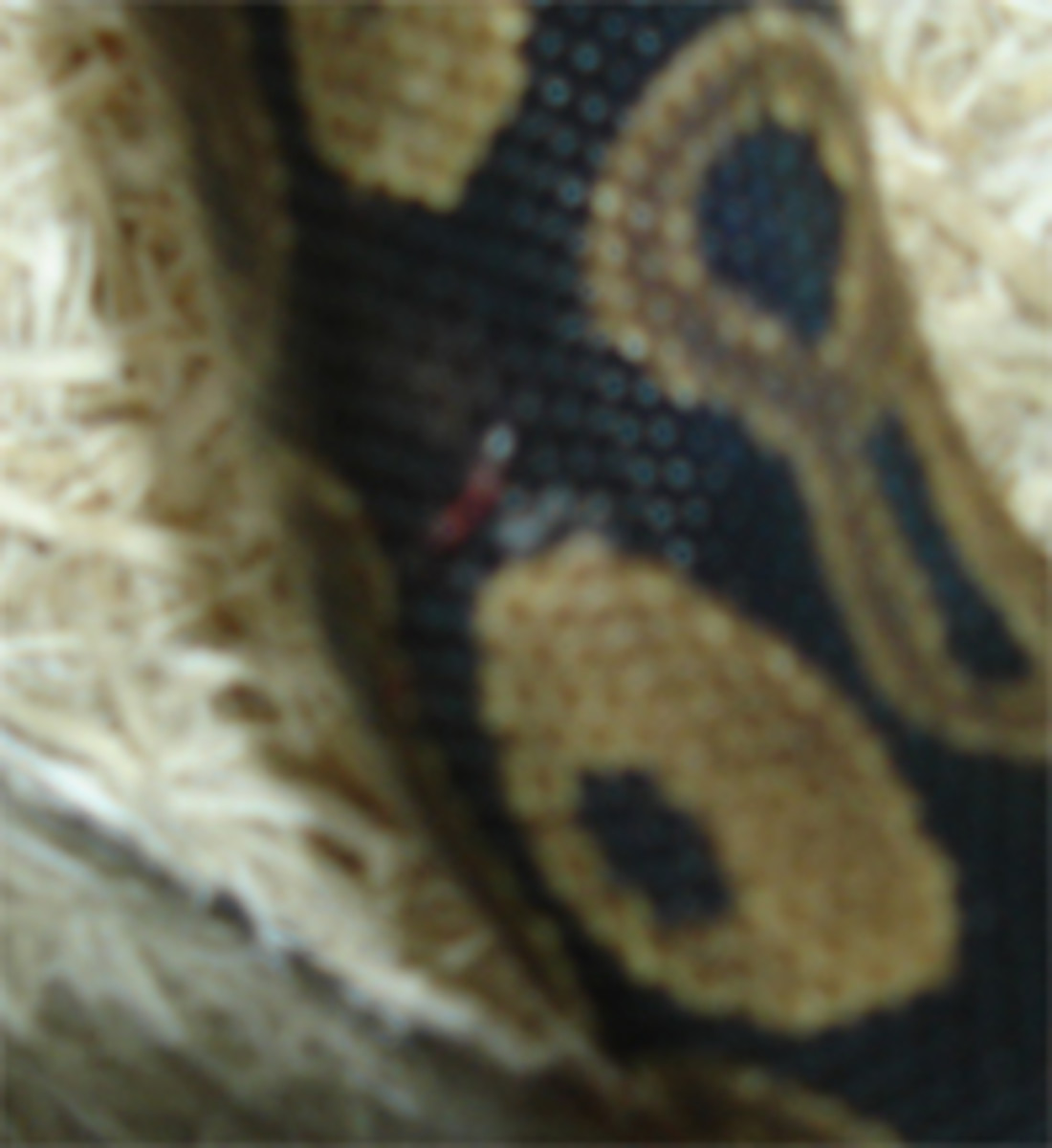Close encounters of the four, six, eight and no legged kind!
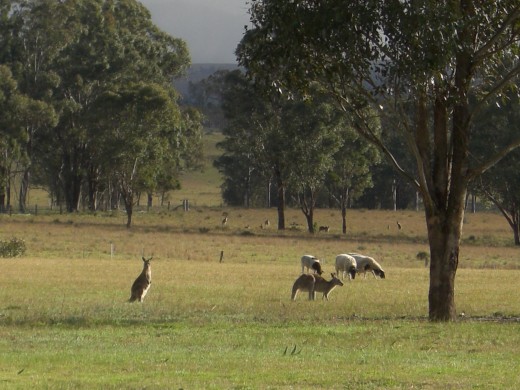
When you move to the country, you can expect to get up close and personal with nature and its creatures!
Since moving to the country in rural New South Wales, Australia two years ago, I certainly have encountered many bugs, lizards, snakes, spiders and more! There seems to be a whole lot more of everything in the country compared to that in the city that's for sure.
THE FOUR LEGGED KIND.....
Foxes: One evening, just on dusk, my husband was in the front yard when I heard him calling out to me. I ran to the window to see what was up and there standing right in front of him was a fox! it was no more than 3 feet away! It was not frightened in the least by his presence. My husband said "what are YOU doing here?" It just stared up at my husband, then it turned and walked a few feet away, turned back and looked at my husband then slowly walked out of our front yard. We were dumbstruck. We have seen a few around our property but never that close. Lucky we have not lost any lambs or chickens to them.
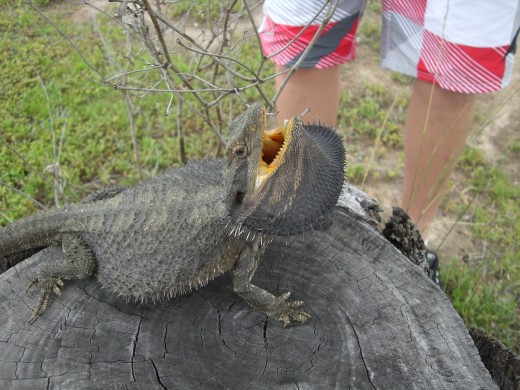
Lizards: We also get some beautiful lizards. From the small skink to the large goanna or monitor.
We get the Blue-tongue Lizard and the Bearded Dragon wandering around our property. They are all harmless and some don't mind you picking them up. Others put on a display opening their huge mouth or spreading their necks and bellies out to frighten predators away.
There are several species of Bearded Dragon in Australia. This one is the Eastern Bearded Dragon. They can live from 10 to 15 years. They are quite docile and gentle and some people have them as pets. We prefer to see them in the wild!
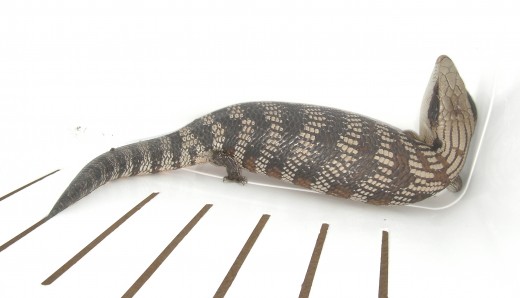
Our dog was barking at something outside one day and he just would not stop. After investigating, we found this big Blue Tongue Lizard under our barbeque. We managed to catch him and relocate him a long way from our curious dog! If they are lucky, they can live up to 30 years! They are slow, gentle creatures. There are 6 species of Blue-Tongue Lizard in Australia. This one is the Eastern Blue-Tongue, meaning it's found in the eastern parts of Australia, just like the Eastern Bearded Dragon. The Blue-Tongue is a member of the Skink family.
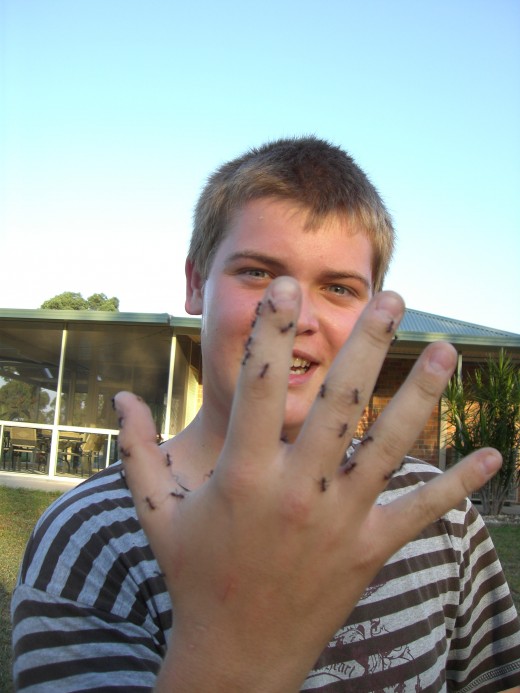
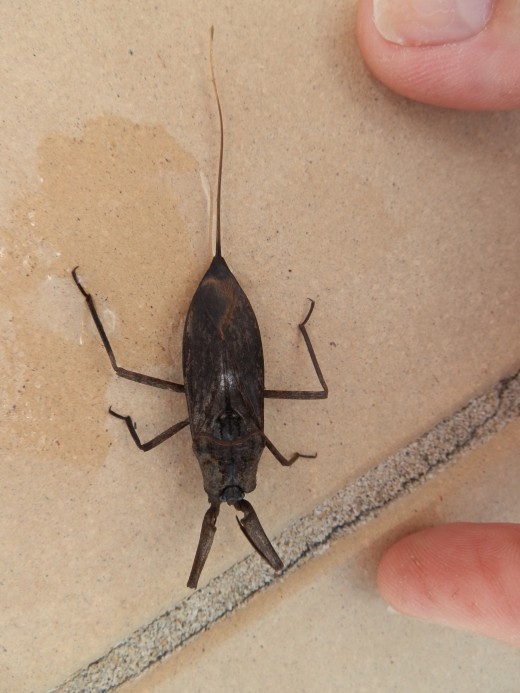
THE SIX LEGGED KIND....
The Meat Ant: The Meat Ant also known as the Meat Eater Ant or Gravel Ant is found all over Australia. We came across numerous nests on our property. These nests can have around 64,000 ants living in them. Their nests can be connected together in a "supercolony" that stretches up to 640 meters or 0.4 miles. Farmers gave them the name Meat Ant because they clean up carcasses. We noticed them cleaning up all the dead bugs from around the house. If you stand near a nest they will crawl all over you. They do nip, but do not sting. I wouldn't like to fall asleep on the grass! The Meat Ant is known to kill the poisonous Cane Toad, a serious pest in Australia.
The Water Scorpion: Then one day I was cleaning the swimming pool and I emptied out the skimmer basket and out fell what looked like a huge cockroach. I had never seen anything like it. I kept it to show my husband. He recognized it straight away. He said he had seen them when he was a child back in Rhodesia. He said it was called a Water Scorpion. But it is not related to the terrestrial scorpion. They are a large insect. They can swim and fly. They have a long tail and use it like a snorkel to breath by sticking it out of the water. They are found all over Australia in dams and ponds and eat aquatic vegetation, small insects, tadpoles, frogs and small fish.
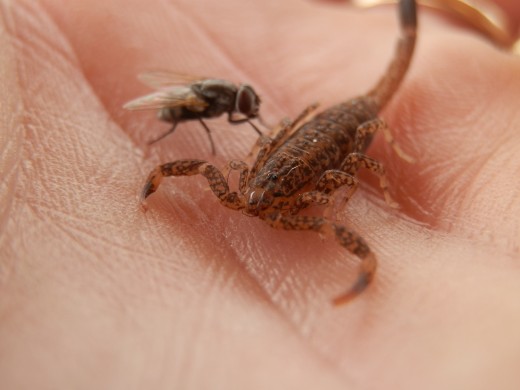
THE EIGHT LEGGED KIND.....
Scorpions - The Marbled Scorpion: I had never seen a scorpion in real life and one day I found four in the house. They were tiny, about 2 to 3 cms long. I thought they must be babies and the mother must be somewhere inside! Then I found more in our swimming pool. After some research I found out they were not babies. They were fully grown, native Australian Marbled Scorpions. I heard from locals that their sting is not too painful. Just like a green ant bite or bee sting. But I did read that a sting can cause inflammation and you may need to see a doctor. I reckon I could handle a sting but luckily so far I have managed to not get stung. They are not aggressive. As you can see by the photo, they are very tiny especially compared to the common house fly. They are also good to have around the home as they like to dine on termites!
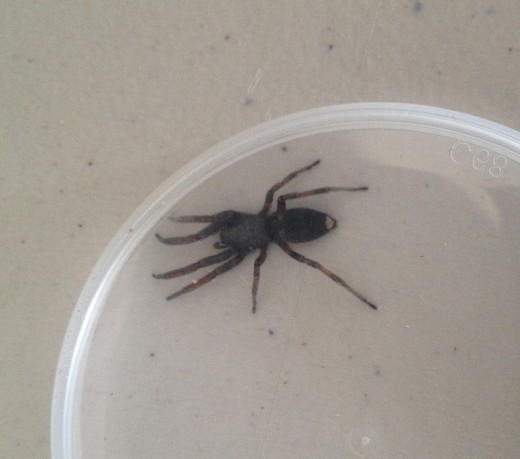
The White-tailed Spider: This medium-sized spider is native to southern and eastern Australia and is so named because of the whitish tips at the end of their abdomens. The female grows up to about 2cm. We find them in and around the home, mostly IN the home! They live in gardens and inside houses and are often found in the folds of clothes, towels and shoes.
They are hunters and seek out their prey rather than spinning a web to capture it. Their preferred prey is other spiders and they are equipped with venom for hunting. They are known to bite humans and effects may include local pain, a red mark, local swelling and itchiness; rarely nausea, vomitting or headache may occur.
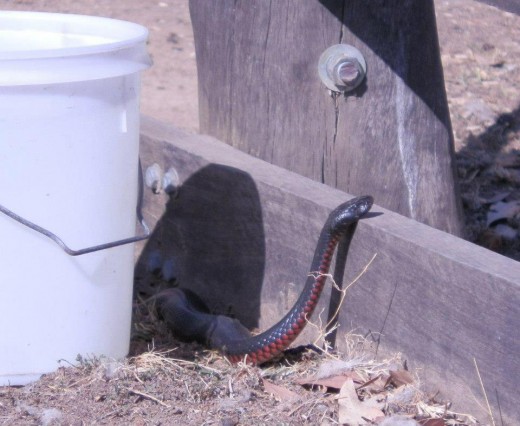
THE NO LEGGED KIND.....
Red-bellied Black Snake: This snake is native to Australia. My first encounter with a red-bellied black snake was when I was going to check our chicken coup for eggs. I almost stepped on it while it was baking in the sun on the door step of the chook shed (chicken coup) Both of us moved incredibley quickly away from each other. It did not try to attack as it was able to escape. But it was still very scary for me! The red-bellied black snake is known to be non-aggressive and placid by nature. They have front fixed fangs which means they are quite capable of striking any part of the body to inject venom. Their diet consists of frogs, smaller snakes and lizards. They can grow up to 2 metres in length and give birth to live young.
Although they are venomous, and are classified as dangerously venomous, the toxicity is not considered fatally dangerous. The venom destroys muscle tissue, but does not effect the central nervous system. Few human deaths have resulted from a bite from this species, and no adults have died from a bite. They are shy creatures, who will evade humans rather then strike. Its also a fact that if you have red bellies in your yard, you are not likely to have Brown snakes! Red's actively chase Brown's away, as the Red Belly toxin kills Browns.
The Brown Snake: My encounter with the Australian Eastern Brown Snake was a very frightening one! I was in our shade house watering the vegetables when I turned and saw a snake coming towards me. I ran screaming from the shade house and called my husband. I knew it was a Brown Snake and they are deadly. My husband came running with a rake and eventually he managed to chase it out but it put up a fight and was incredibly aggressive. It was leaping through the air and attacking everything.
The Eastern Brown Snake is the second most venomous terrestrial snake in the world. Its venom consists mostly of neurotoxins. They are known to be highly aggressive if provoked. without medical treatment their bites can be fatal. They are attracted to rural and farming areas due to the large number of rodents. They are opportunistic feeders and will feed on rodents, frogs, lizards, birds and other snakes.
I haven't been able to photograph the Brown Snake which is good in a way because I don't really want to see another one!
I am so happy we moved to the country as I don't think I would have seen so many of our amazing creatures "up close and personal". They all have their place here and we have not had any "bad" encounters. You have to respect them, leave them alone, keep out of their way, be mindful of them, be cautious and wary and always tell your visitors about them, especially the snakes. After living in this environment, I have noticed a lot more of nature and its beauty and feel lucky to live in this wonderful country, Australia.

